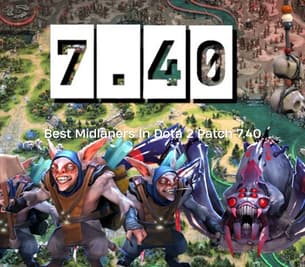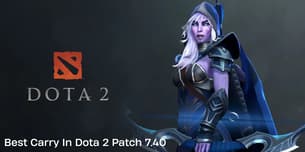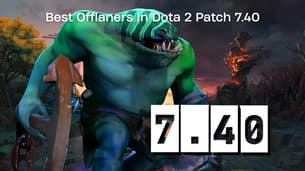
The different things that make eSports thrilling

The world of competitive and streamed gaming is one that seems to get bigger all the time. From Fortnite to League of Legends, it seems like everyone is trying to show off their game skills online, and prove that they’re the best at the same time.
This level of competition is also well seen in the iGaming sector where players often compete in tournament games. Interestingly, many prefer to play at Aus casinos online for several reasons, including the large number of games available, quick deposit and withdrawal options, and exciting bonuses. The eSports sector is no different as it also features several moving parts that attract people, including the following.
Split-second timing
In eSports, timing is absolutely crucial. Just fractions of a second can make a difference between winning and losing, which is one of the things that appeals about it. One of competitive gaming’s most iconic moments came when one player had about one-tenth of a second to make a high-risk decision that paid off. In the 2004 edition of the Evolution Championship Series, Daigo Umehara, playing as Ken in Street Fighter III, used a parry, a move that can only work in a very specific 0.1 seconds, to hold off the Super Art attack of Justin Wong’s Chun Li when any hit from Wong would have seen him win. The move, known as Evo Moment 37, has become legendary among eSports fans and is credited with reviving fighting games competitions. Certainly, neither the event nor eSports in general would have been the same without it.
Game changing game changes
With traditional sports, things tend to operate in the same way match-to-match and season-to-season. While there might be minor tweaks to the rules of the game, they’re usually announced well in advance, usually during the preseason. This means that there’s a consistency to how the sports operate. With eSports, however, there is always the possibility that an individual game might get some kind of update or patch, which could completely change how the game is played. Not only that, but these updates can happen out of the blue, which means that, in a tournament setting, a team can have to rethink its strategy, often on the fly. One of the most notable examples of an update that literally changed the game was the August 2015 League of Legends Juggernaut Patch. This update saw champion-class characters Garen, Mordekaiser, Skarner, and Darius reworked into all-powerful “juggernauts”. This meant teams had to reassess how they prepared for tournaments, and caused a growth of interest and excitement, not to mention a little controversy.
Team and individual brilliance and psychology
When you are building a team to do any sort of job, you will need to make sure that everyone knows where they sit in the squad and what their roles are. When it comes to eSports, the human element is what often turns something that could feel cold, rote, and mechanical into something thrilling, exciting, and very, very, human. When the entire team works together to make a perfect play that can disrupt their opposition, it is a fascinating display of human teamwork. But there’s also the matter of how people can gain a morale and momentum boost from a team member’s smart decision, which can often mean that a game changes instantly thanks to a moment of genius. One classic example took place at the IEM Katowice League of Legends tournament in 2013. Fnatic were up against SK Gaming in a match that had gone into the rubber match of a three-match series, and things were tense. Fnatic were up against it, SK Gaming was forcing the attack, and Fnatic were getting set to defend for their lives. But Fnatic mid-laner xPeke had other ideas. Playing as Kassadin, he found a gap in SK Gaming’s defence and teleported into his opponents’ base. There, he skilfully avoided enemy attacks and chipped away at SK Gaming’s Nexus. Despite the opposition managing to get back, he was able to destroy the base. This moment lives on in the minds of eSports fans and to xPeke became a verb for when someone sneaked in a successful backdoor attack against overwhelming odds.
Audience participation
It’s one thing to play a competitive video game. It is quite another to do so when there’s a crowd of fans watching you. And the atmosphere at eSports events can turn something good into something great. Whether its the ESL One in Cologne, Germany, earning itself the nickname of The Cathedral of Counter-Strike for its intense atmosphere, the League of Legends Worlds at London’s O2 Arena in 2024 seeing 20,000 fans raise the roof, or the crowd at the NEC in Birmingham, England, measuring more than 100 decibels at the 2022 Insomnia 69 Team Fortress 2 event, the crowd often makes the competition with the way it brings out people’s emotions and gives competitors, attendees, and viewers an experience they will never forget.
So there you have it. Whether it’s team psychology, moments of individual brilliance, displays of split-second gaming genius, or just pure audience magic, there are plenty of different moving parts that can all combine to make eSports something that people around the world absolutely love.

Kateryna Prykhodko on luova kirjoittaja ja luotettava EGamersWorldin toimittaja, joka on tunnettu mukaansatempaavasta sisällöstä ja yksityiskohtien huomioimisesta. Hän yhdistää tarinankerronnan selkeään ja harkittuun viestintään, ja hänellä on suuri rooli sekä foorumin toimituksellisessa työssä että kulissien takana tapahtuvassa vuorovaikutuksessa.
 Parhaat Midlane-pelaajat Dota 2 -päivityksessä 7.40Löydä parhaat keskikentän pelaajat Dota 2 -päivityksessä 7.40 - parannukset, vahvuudet ja voittoprosentti.
Parhaat Midlane-pelaajat Dota 2 -päivityksessä 7.40Löydä parhaat keskikentän pelaajat Dota 2 -päivityksessä 7.40 - parannukset, vahvuudet ja voittoprosentti. LEC Versus 2026 -kauden katsojan opas: Päivämäärät, aikataulu, formaatti, osallistujatLEC Versus 2026 on täällä. Tarkista koko otteluohjelma ja joukkueiden kokoonpanot. Seuraa LEC-veteraanien ja ERL-suurten pelaajien välistä yhteenottoa kauden ensimmäisestä tittelistä.
LEC Versus 2026 -kauden katsojan opas: Päivämäärät, aikataulu, formaatti, osallistujatLEC Versus 2026 on täällä. Tarkista koko otteluohjelma ja joukkueiden kokoonpanot. Seuraa LEC-veteraanien ja ERL-suurten pelaajien välistä yhteenottoa kauden ensimmäisestä tittelistä. Paras kuljetus Dota 2:ssa Patch 7.40:ssäTutustu Dota 2:n Patch 7.40:n parhaaseen kantoon - tilastot, vahvuus ja voittomäärät.
Paras kuljetus Dota 2:ssa Patch 7.40:ssäTutustu Dota 2:n Patch 7.40:n parhaaseen kantoon - tilastot, vahvuus ja voittomäärät. Parhaat offlanerit Dota 2:n patchissa 7.40Tutustu Dota 2 Patch 7.40:n parhaisiin offlanereihin - tilastot, voittosuhteet ja vahvuudet.
Parhaat offlanerit Dota 2:n patchissa 7.40Tutustu Dota 2 Patch 7.40:n parhaisiin offlanereihin - tilastot, voittosuhteet ja vahvuudet.


